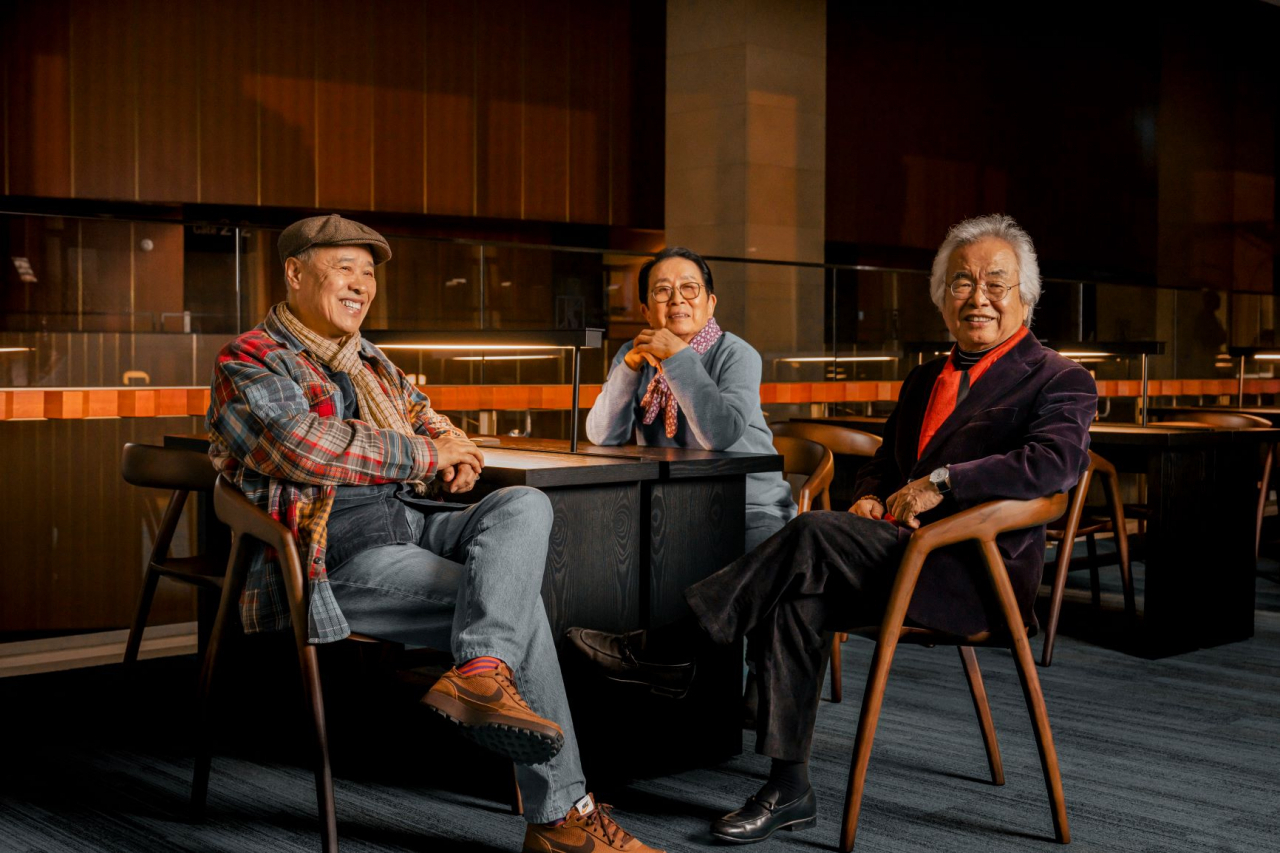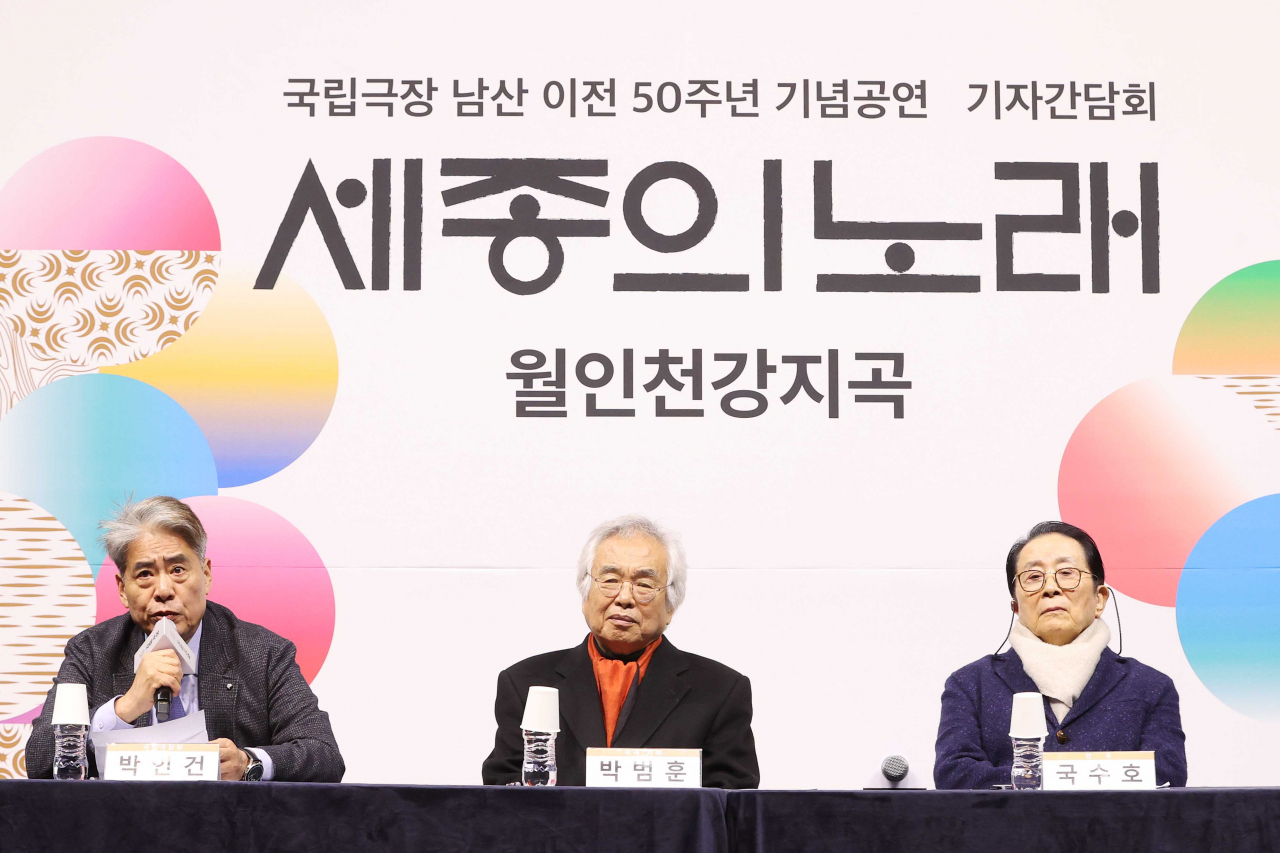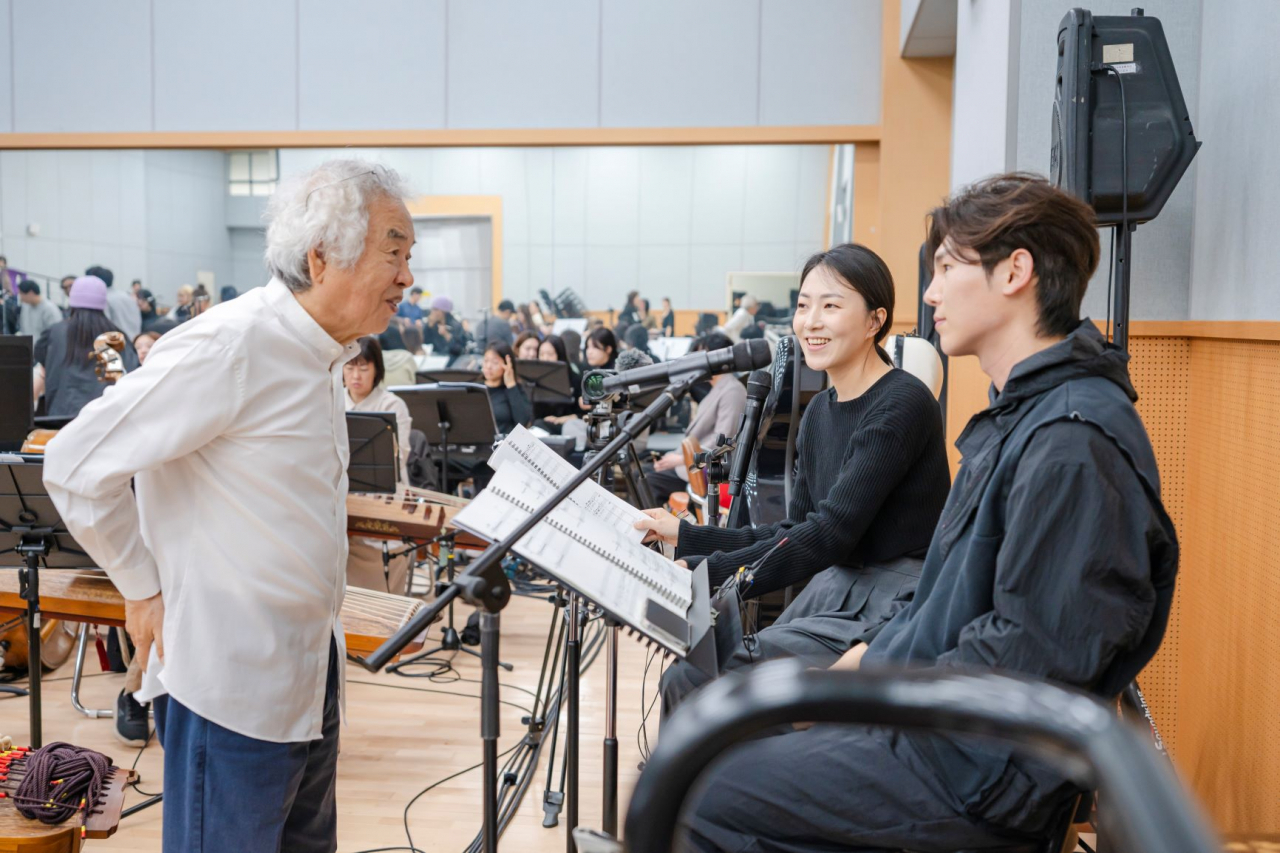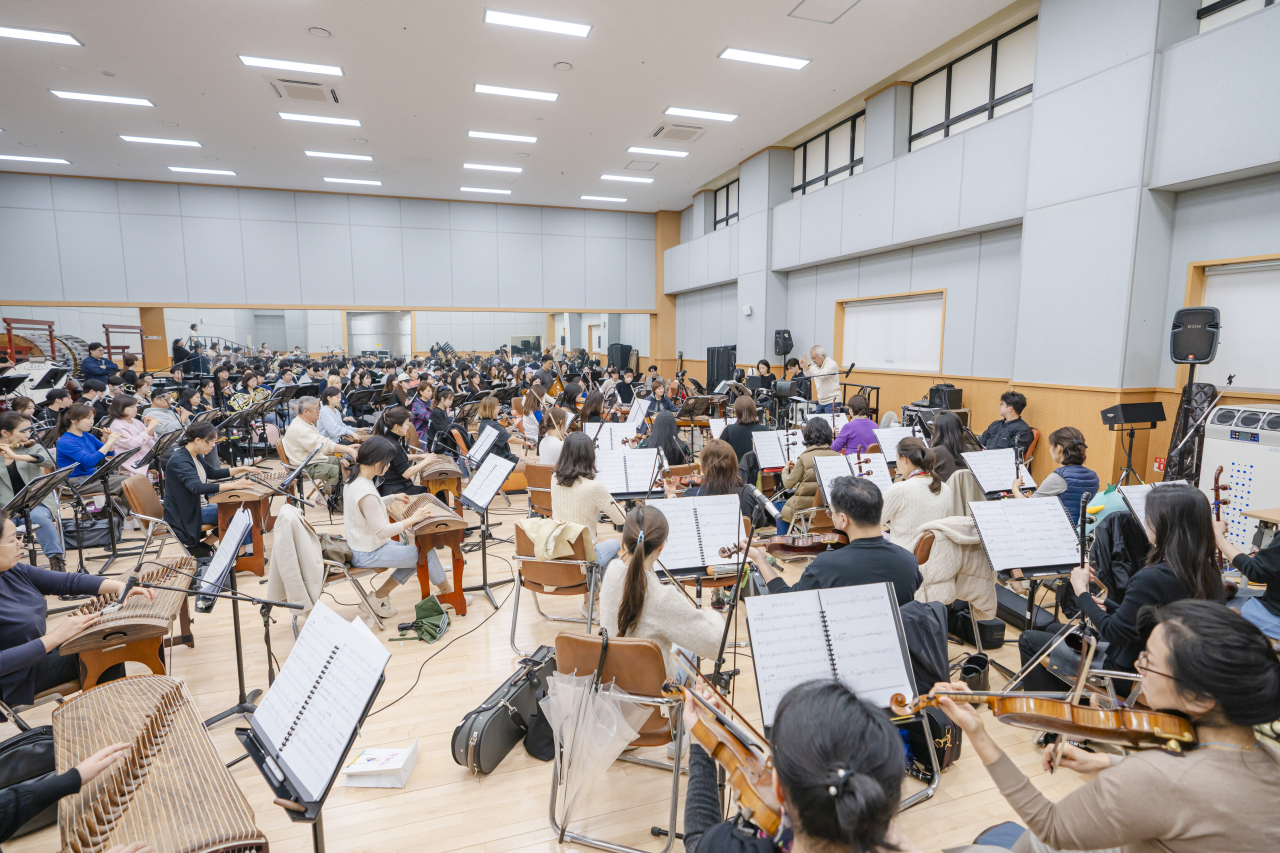 |
From left: Director Sohn Jin-chaek, master choreographer Guk Su-ho and composer- conductor Park Bum-hoon (National Theater of Korea) |
A grand-scale production featuring a blend of traditional Korean instrumental music, Western orchestra, "pansori" (Korean traditional narrative singing), choir and dance will celebrate the year's end at the National Theater of Korea (NTOK).
Three state companies -- the National Changgeuk Company of Korea, the National Dance Company of Korea and the National Orchestra of Korea -- affiliated with the NTOK have joined forces to mark the 50th anniversary of the theater's relocation to Namsan, central Seoul.
A total of 313 performers from the companies, orchestra and choir will perform “Song of King Sejong: Wolincheongangjigok” at the Haeoreum Grand Theater on Dec. 29-31.
 |
From left: National Theater of Korea CEO Park In-gun, composer and conductor Park Bum-hoon and master choreographer Guk Su-ho attend a press conference in Seoul, on Nov. 28. (Yonhap) |
“This year marks the 50th anniversary of the National Theater of Korea becoming a hub for the creative arts,” said its CEO Park In-gun during a press conference held last week.
“We have prepared an ultimate production that showcases all the creative capabilities accumulated over the years.”
Established in 1950 in Seoul's Taepyeongno in Jung-gu, the NTOK moved to Daegu, then to Myeong-dong in Seoul before finally settling in its current location in Jangchung-dong in October 1973.
 |
From left: Composer- conductor Park Bum-hoon, pansori singers Yi So-yeon and Kim Jun-soo is seen at a rehearsal. (National Theater of Korea) |
“Song of King Sejong” is based on “Wolincheongangjigok,” an epic poem written by King Sejong of Joseon, who invented Hangeul, the Korean writing system. The poem pays tribute to Queen Soheon, who passed away before King Sejong, by depicting the life of Buddha and expressing a wish for peace in the queen's afterlife. The production, however, will exclude Buddhist elements, and will highlight the themes of love and harmony instead.
The performance incorporates Korean traditional dance into the narrative format of a cantata, involving a choir and pansori singers. The stage will be set with 97 musicians of the Korean traditional instrumental ensemble and Western instrument players forming a circle in the center, with a choir of 174 members at both ends. Eleven pansori singers and 31 dancers will perform at the center of the stage.
 |
Composer- conductor Park Bum-hoon leads a rehearsal at the National Theater of Korea in Jung-gu. (National Theater of Korea) |
The large-scale production was brought to life by collaboration among renowned figures in the performing arts -- composer and conductor Park Bum-hoon, director Sohn Jin-chaek and master choreographer Guk Su-ho. The lyrics were penned by writer and poet Park Hae-jin.
"To create a 21st-century version of 'Wolincheongangjigok,' I wanted to incorporate our sound to the current times. Considering the historical significance of 'Wolincheongangjigok' being written for the (ordinary) people, I made it easy to understand and sing in Korean,” conductor Park explained.
He added that while Korean traditional instrumental music takes center stage, Western instruments will fill in certain musical gaps.
The pansori performers from the Changgeuk troupe will sing solo and ensemble parts, while the choir will support with the melody, said Park, in an attempt to blend pansori and bel canto singing styles.
Park completed the composition and sought assistance from Sohn and Guk to present the work as a comprehensive artistic performance.
All three veterans have a history with the NTOK from its early days on Namsan. Park was the first director of the National Orchestra of Korea while Guk performed as the lead dancer in one of its inaugural productions, "Legend of the Star." Guk also served as the director of the National Dance Company. Sohn participated in the production of another inaugural work, "Hero Admiral Yi Sun-sin."
"To me, the National Theater is like a nurturing mother. It is overwhelming to be in charge of such a major production for the 50th anniversary,” Guk said.
Sohn was unable to attend the press conference due to the flu.







![[Weekender] Korea's traditional sauce culture gains global recognition](http://res.heraldm.com/phpwas/restmb_idxmake.php?idx=644&simg=/content/image/2024/11/21/20241121050153_0.jpg)